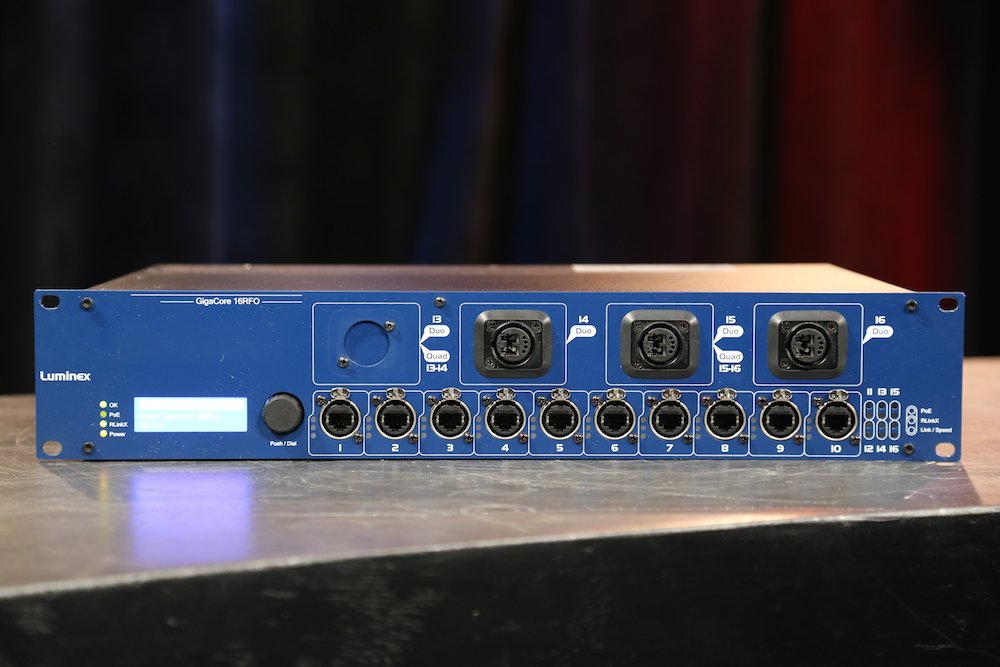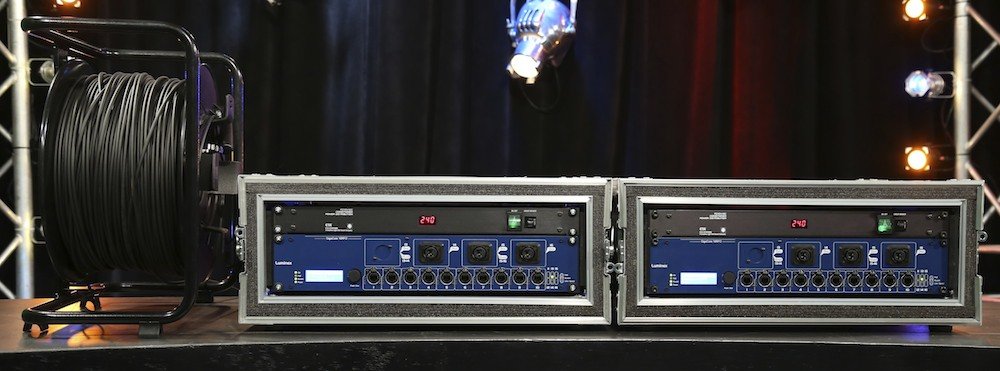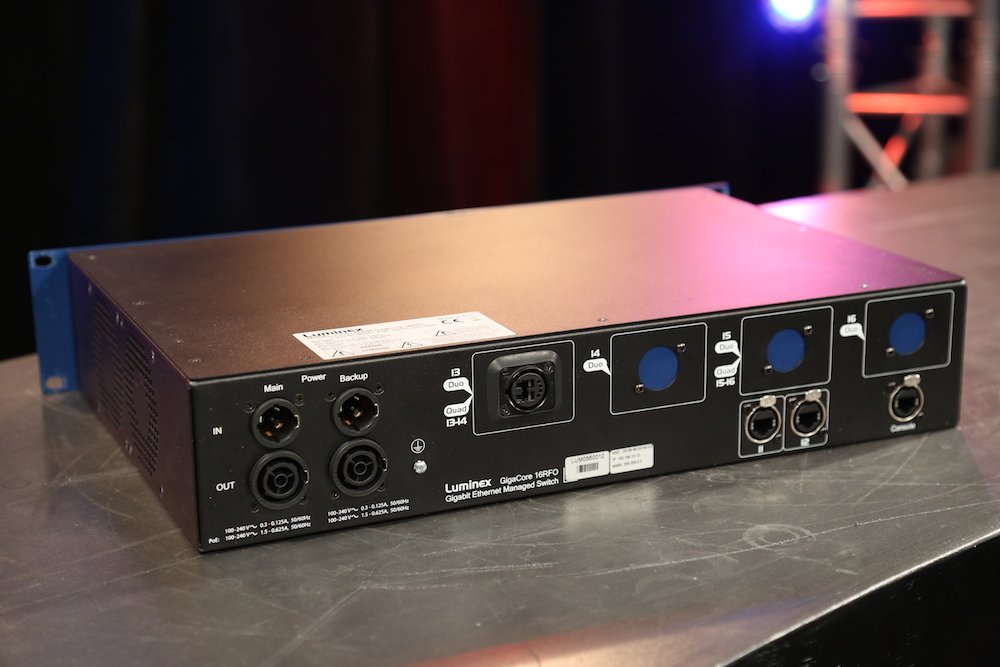News
15 Jul 2015
Review: Luminex GigaCore

Subscribe to CX E-News
Connecting the bits…
We often take for granted how multiplexing has changed the way we do things. Now instead of running lots of analogue audio multicore, we can run a data cable. Instead of running lots of lighting control multicore, we can run a data cable. Instead of running a bunch of video cabling, we run (wait for it), data cable. We operate live production in a data heavy environment. This is great if you understand networks, but here’s the thing: not everyone does. That’s pretty scary when you consider just how heavily we rely on them working right!
Luminex has recognized the need to simplify deployment of reliable data infrastructure, and come up with a product which does exactly that: the GigaCore range of network switches. They’re a bit like the ones your brainiac IT mates have, but you don’t need a pocket protector or a fancy certificate to use them.
The range comprises four models, each of which support up to 32Gbps throughput. We were fortunate enough to be handed a pair of the top end 16RFO units for our review. The 16RFO features a total of 12x 10/100/1000Mbps ethernet ports, all on Neutrik EtherCon connectors. Ten of these are on the front panel, the remaining two are on the back, and they all auto-uplink so you won’t need any crossover cables. In addition to this, the unit supports up to four D-type rugged fiber connectors, and you can install these on the front or rear panel, or even a combination of both. The unit will support four Duo or two Quad fiber ports.
With an optional power supply, the 16RFO can even support up to 150W of PoE with three definable service levels on a per-port basis. The 16RFO has dual power supplies with PowerCon True1 connectors. The redundant cooling fan is another nice little piece of insurance.
The GigaCore range is designed specifically to support protocols like Dante, Ethersound, REAC, sACN, MANet2, and ArtNet among others. The really cool part is that it can handle more than one of them at once. Normally you wouldn’t go mixing a layer 2 protocol such as REAC with other network devices, on a single switch, but GigaCore is designed to do exactly this. Also, it’s rack mountable and doesn’t use a wall-wart power supply – two more very good reasons to like it.
If you’re using only one switch, setup is very simple. Turn the unit on, then define which ports belong to which “groups”. Every port will link with every other port in the same group. So you might define audio transport as group 3, lighting control as group 5, and a video stream on group 8. The first two groups are reserved – group 1 for switch management functions, and group 0 for ISL or Inter Switch Links.

Once a port it a member of Group 0, it then becomes a link to other GigaCore switches. Ports on these remote switches can be defined as part of the same groups, and will automatically route through the available links between switches. While fiber port bandwidth is limited to 1Gbps, it’s possible to use multiple ports to increase this. Of course you can link switches together using the Ethernet ports, however if it’s distance you want then fiber is a better option – Cat5 cable tops out at around 100m.
I had a play around using a console and IO box running REAC each plugged into one switch. I ran dual links between two switches – one a 200m roll of fiber and the other a 5m Cat5 cable). GigaCore has a feature called RLinkX, which automatically establishes redundant paths through available ports.


Pulling either link didn’t cause any interruption to audio passing through the switches. I even tried unplugging the power supply, which caused a warning light to flash on the front panel but had no effect more adverse than this. In practice if your entire show control was running through one of these units, you’d be a fool not to run one supply from a UPS. I think Luminex recognizes that failure for a device such as this isn’t really an option, and consequently the build quality, feature set and performance all seems quite robust.
Basic configuration of mapping ports to groups can be done via a rotary encoder button and LCD interface on the front panel. For more advanced configuration you can call up the web based interface, which lets you do all the basic stuff as well as define individual port speeds, change the name and IP address of the unit, and perform firmware updates. You only need to make one port on one switch a member of the admin group, and from here you can admin all the switches.
The web interface is nice and all, but in a live situation you don’t necessarily have time to use it. The front panel makes perfect sense, and gets the job done quickly. My only gripe with it is that to escape a menu level you need to press on the encoder then turn it left, which is not intuitive. If you can’t figure that out, it times out back to the home screen after a little while.
Ultimately, GigaCore is designed to provide rock solid connectivity from FOH to stage (and even other areas such as broadcast trucks) without requiring a degree in networking to setup. With GigaCore, if you can plug in connectors and count then you can do some pretty complex networking – you just might not have known it until now.
- Brand: Luminex
- Model: GigaCore 16RFO
- RRP: As tested (with Neutrik Duo multimode, no PoE) – Aud$9064.00 inc GST each
- Product Info: www.luminex.be
- Distributor: www.productionaudio.com.au
Subscribe
Published monthly since 1991, our famous AV industry magazine is free for download or pay for print. Subscribers also receive CX News, our free weekly email with the latest industry news and jobs.







